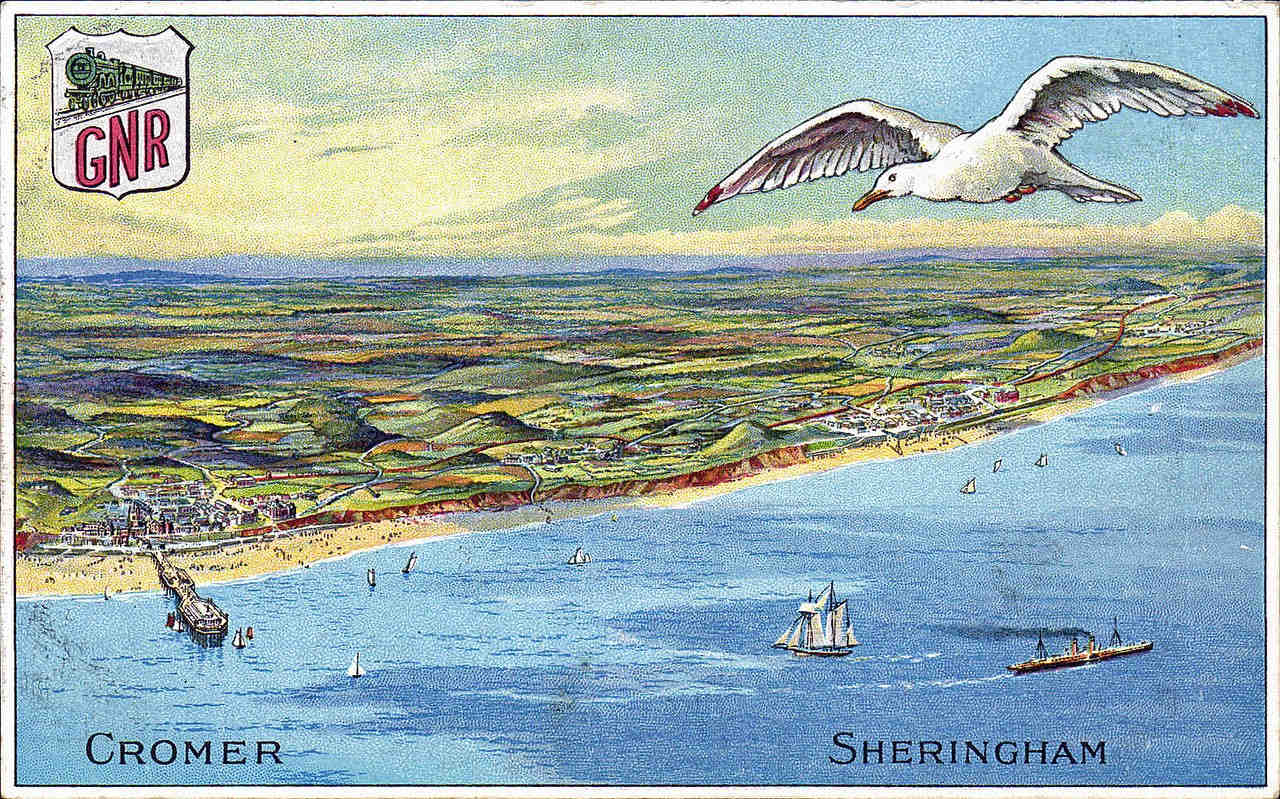12th September 2023 “Railways to the Coast” by Tony Kirby

A fresh, bracing start was made to the 2023/24 season with a welcome by Branch Chairman Robert Bartlett OBE, followed by a review of the very comprehensive year’s programme by Fixtures Secretary Michael Smyth.
Our guest speaker Tony Kirby then took the floor to give his “Railways to the Coast” talk, the first half of which focused on railways and ports, from a goods perspective. Tony described the long-standing connections between older ports and their river systems (such as Kings Lynn and the River Cam and Great Ouse), moving on to canals, the tramways that fed them and then to the first railways which evolved from the tramways. We looked at the Stockton and Darlington and how the success of the line led to the development of a new port at Middlesborough, including the North Eastern Railway’s visionary use of electric traction under Vincent Raven. The Caradon copper mine in Cornwall was then cited as another example of a former tramway (which ran from the mine to Liskeard) connecting with a canal (Liskeard and Looe), all of which was then converted to a railway and finally connected to the Main Line with a link from Coombe Junction to Liskeard in 1902.
Tony then illustrated further ports whose development was stimulated by connection to the railway system. These included Yarmouth (where we saw a Class 03 working Birds Eye vans along the Quay and the connection from both the Great Eastern and Midland and Great Northern Joint Lines) and Harwich with the imposing 1862 Great Eastern Hotel, the 1880s developments of Parkston Quay and a Class 15 drawing wagons off the Train Ferry. The impact of the M&GN on Kings Lynn and Wisbech was then described, along with the fortunes of Tollesbury, whose vision under Mr Wilkin (of Tiptree Farms fame) was never to materialise owing to the Great Eastern’s preference for Harwich.
The second part of Tony’s talk focused on seaside resorts and how the coming of the railways totally transformed formerly quiet towns and villages such as Scarborough, Saltburn, Cromer and Hunstanton into major tourist destinations. The clever marketing employed by the Great Western Railway and its coining of the term ‘Cornish Riviera’ in 1905 were well illustrated, with photographs of bustling scenes at Penzance and St Ives (including a delightful 1954 view at St Ives of the through ‘Cornish Riviera’ from Paddington with at least 12 vehicles).
Tony completed his talk in the Malton and Scarborough areas, where he grew up. The sheer scale of the railway operation at Scarborough was amply illustrated with photographs of the various platforms and carriage sidings at Scarborough Central, Londesborough Road and Gallows Close (including a rare picture of a Jinty shunting the yard here). The difficulty of operating the railway in such a busy and congested area, compounded by the need to reverse Whitby trains, was all too apparent.
At Malton we saw some rare views of Summer Saturday traffic on the Gilling Line, which was retained for this purpose until the Summer of 1965. These included station pilot, Stanier Class 4 2-6-4T No. 42639, piloting a holiday train for the East Coast Main Line out of Malton Station round to Scarborough Road Junction, then uncoupling and banking the train from its start until it crossed over the main Malton-Scarborough line. On this latter line we saw examples of the wide variety of holiday traffic, including a Crab from the West Riding, a K2, a Royal Scot, 9F, a green BR Class 25 on LMS stock and, on Easter Monday 1967, a Low Moor Black 5 on the last revenue-earning steam working to Scarborough. Bringing us right up to date, Tony concluded the evening with the latest in traction on the line, a Class 68 on a Trans-Pennine Express working.
The meeting closed at 9.40 pm with great applause from the audience for a fascinating, well-researched and wonderfully illustrated insight from Tony into railways, ports and seaside towns across the country.
